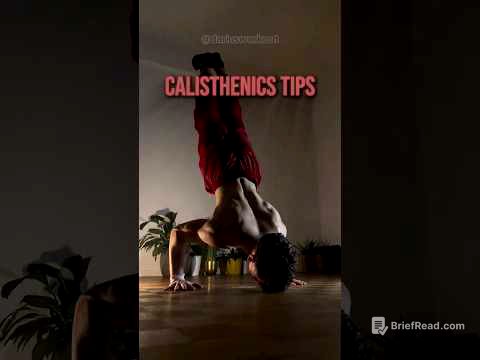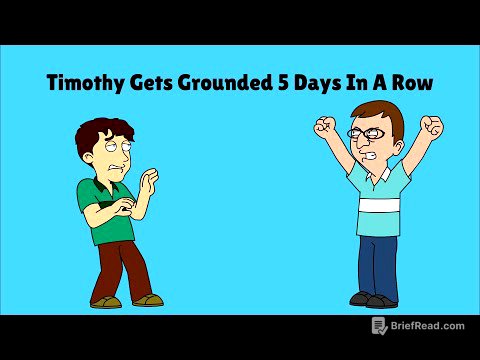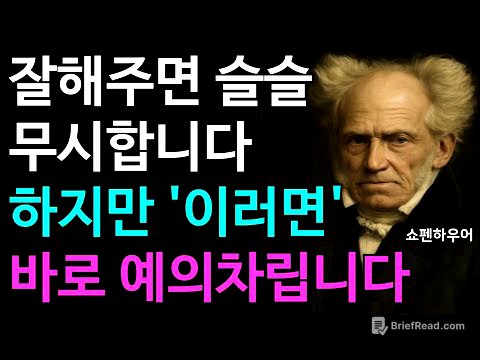TLDR;
This video explains the three key ingredients for effective storytelling: specificity, reliving the story, and sharing the meaning behind it. It also addresses common misconceptions about storytelling, such as needing extraordinary experiences or being naturally charismatic. The video emphasizes that anyone can become a great storyteller by focusing on these core elements and understanding when to use stories for maximum impact.
- Overcoming misconceptions about storytelling.
- Three ingredients for effective storytelling: specificity, reliving, and meaning.
- Knowing when to use storytelling for maximum impact.
Intro [0:00]
The video introduces the idea that effective storytelling relies on three simple ingredients, debunking the myth that it requires wild experiences or natural charisma. It highlights a Stanford study showing that students who turned facts into stories remembered 93% of the information, compared to only 13% for those who didn't. The video promises to reveal the reasons people avoid storytelling, the essential ingredients for making it easy, and when storytelling is most effective.
Misconception 1 [0:57]
The first misconception is the belief that you need crazy life experiences to tell good stories. The video argues that stories are about meaning, not just events. It suggests that everyday moments are more relatable than grand adventures and that the power of a story lies in the perspective and framing, not the events themselves. The video shares a personal story about walking his dogs to illustrate that the value of a story comes from the perspective shared, not the event itself.
Misconception 2 [3:40]
The second misconception is that stories are just fluff and that facts and data are what truly matter. The video explains that while we are conditioned to be rational and stick to facts, this approach loses the emotional connection that makes ideas memorable. It points out that people often forget facts presented without a story and that stories are the glue that makes facts persuasive and memorable. The video uses the example of statistics versus the dog story to illustrate how stories are more memorable.
Misconception 3 [5:23]
The third misconception is that storytelling is only for charismatic extroverts and that you're either born a storyteller or you're not. The video argues that introverted or quiet individuals can be excellent storytellers by using structure and timing rather than relying on energy and bravado. It debunks the idea that extroversion equals good storytelling, emphasizing that storytelling is a learnable craft. The video presents a humorous example of an annoying extrovert trying to tell a story to illustrate the point.
Ingredient 1: Specificity [6:42]
The first ingredient for great storytelling is specificity. The video explains that being specific makes a story more relatable and engaging. It introduces the five senses framework (sight, sound, smell, taste, touch) and adds a sixth sense: emotion. The video provides examples of how to use each sense to add detail and make the story more real, activating the listener's mirror neurons and simulating the experience in their brain.
Ingredient 2: Reliving [9:19]
The second ingredient is reliving the story rather than just reporting it. The video differentiates between reporting, which is just information, and reliving, which is transformation. It explains that reliving a story involves using the five senses to create a vivid experience for the audience, changing the tense to present tense, and letting your body join in on the story. The video provides three tips for reliving a story: use the five or six senses, change your tense to present tense, and let your body join in.
Ingredient 3: Meaning [12:09]
The third ingredient is sharing the meaning of the story. The video emphasizes that the meaning is what makes the story useful and transforms it into a gift for the audience. It explains that the story is the doorway, but the meaning is what you lead people into once they've walked through the door. The video stresses the importance of relevance and making a clear link between the story and the lesson for the audience.
Timing: When to Share Stories [14:58]
The final part of the video discusses when storytelling works best and when it gets in the way. The video shares a simple rule: if you have 15 minutes or more and want to be memorable and influential, share a story. It contrasts this with situations where a straight and precise answer is more appropriate. The video uses a Q&A example to illustrate how storytelling can be impactful when time allows and a quick "yes or no" scenario to show when it's not.





![[Densetsu.EXE Lore Video] We're Gonna Take Akiba!](https://wm-img.halpindev.com/p-briefread_c-10_b-10/urlb/aHR0cDovL2ltZy55b3V0dWJlLmNvbS92aS9rT0xwYm0wZXR2SS9ocWRlZmF1bHQuanBn.jpg)



